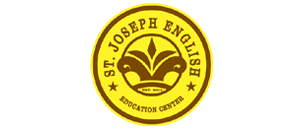
In a landscape saturated by fleeting trends and platforms that promise connection but often deliver fragmentation, v7v7 emerges as a coherent idea and a growing practice that blends creativity, collaboration, and thoughtful digital presence. More than a single tool or a brand, v7v7 represents a conceptual framework for approaching projects, communities, and creative expression with intentionality, iteration, and a playful seriousness. This article outlines the origins, core principles, practical manifestations, and future possibilities of v7v7, aiming to offer both context and inspiration for those curious about this thematic movement.
Origins: the name v7v7 hints at pattern and symmetry, a minimalist emblem that suggests iteration (the repeated seven), balance (mirrored characters), and modularity (simple building blocks). While its roots are eclectic — drawing on internet microcultures, open-source collaboration, and analog design sensibilities — v7v7’s early adopters were typically creators and technologists who valued projects that could evolve through community input without losing a strong authorship. From the beginning, v7v7 was less about a prescriptive manifesto and more about a set of compatible attitudes: openness to remix, a preference for lightweight infrastructure, and an emphasis on craft and ceremony in digital creation.
Core Principles: at the heart of v7v7 are several interlocking principles that guide how projects are conceived and sustained.
- Iterative craftsmanship: v7v7 values small, deliberate iterations. Instead of large, disruptive overhauls, projects move forward through frequent, visible refinements that allow contributors and audiences to witness progress.
- Community-centric authorship: authorship in v7v7 contexts is often collective. While there is room for curators and originators, the community’s contribution is recognized as part of the creative output.
- Lightweight infrastructure: v7v7 favors tools and processes that are accessible and low-friction. This reduces barriers to participation and allows ideas to be tested quickly.
- Multimodal expression: v7v7 projects are not confined by a single medium. They may combine text, visual design, music, code, and performance in ways that emphasize dialogue between forms.
- Respectful play: novelty and experimentation are encouraged, but they coexist with a culture of mutual respect. Play here is a method of exploration rather than shock for attention.

Practical Manifestations: v7v7 can appear in many shapes. For digital designers, it might be a micro-library of design tokens that evolves as contributors submit variations and use-cases. For musicians, v7v7 might be a collaborative release model where stems and production notes are shared openly so others can create reinterpretations. For local communities, it could be a rotating public art project where each iteration is installed by a different designer or collective. The common thread is a predictable structure that invites improvisation.
Tools and workflows associated with v7v7 are intentionally modular. Version control systems, lightweight content management, simple templating, and community-run documentation often form the backbone. These tools are chosen not for novelty but for durability and ease of onboarding. A v7v7 project might start as a single-page repository with clear contribution guidelines and expand organically through forks, pull requests, and periodic curated syntheses that highlight what the community values.
Community and Governance: governance in v7v7 contexts tends to favor clarity and low overhead. Rather than elaborate bureaucracies, v7v7 initiatives often adopt clear roles — maintainers, contributors, curators — and simple decision-making heuristics such as consensus, triage by maintainers, or rotating stewardship. This approach helps maintain momentum without creating bottlenecks. Importantly, v7v7 communities invest in onboarding and documentation so that newcomers can participate meaningfully without steep learning curves.
Case Studies: imagine a digital zine produced under v7v7 principles. Each issue is themed, but contributors are encouraged to submit work in different formats — essays, sound pieces, code experiments, visual art. The editorial team curates with an ethos of inclusion, preserving author credits and offering remix-friendly licenses. Issues are released with a companion repository where readers can access source files and rework content. Over time, the zine develops a family of forks and spin-offs, each reflecting the reinterpretations of different local communities.
Another example is a local design cooperative that uses v7v7 methods to revamp urban spaces. Designers and residents collaborate through iterative workshops. Small interventions — benches, murals, lighting experiments — are introduced rapidly, observed for impact, and refined. Documentation is shared openly, encouraging other neighborhoods to adapt the ideas. The cooperative’s identity remains consistent through a minimal visual language and a commitment to incremental progress.
Benefits and Challenges: v7v7 offers several advantages. It accelerates learning through visible iteration, spreads authorship to create richer and more diverse outcomes, and reduces the risk associated with large, monolithic projects. Its lightweight nature makes it accessible to people with varying levels of commitment and technical skill.
However, challenges exist. Collective authorship raises questions about attribution and compensation. Lightweight governance can struggle when projects scale or when conflicts arise. And the emphasis on iteration may be at odds with stakeholders who demand finality and strict timelines. Addressing these issues requires thoughtful policies for credit, adaptable governance models, and clear expectations about the scope and timeline of v7v7 initiatives.
Measuring Impact: traditional metrics like downloads or page views capture only a fraction of v7v7’s value. Equally important are qualitative signals: the number of forks and reinterpretations, case studies of local adaptations, testimonials from participants, and the emergence of derivative works that demonstrate cultural resonance. For many v7v7 projects, long-term vitality is a better indicator than short-term spikes.
Ethics and Sustainability: because v7v7 often involves open practices and community labor, ethical considerations are central. Fair attribution, transparent governance, and mechanisms for revenue-sharing or compensation where appropriate help ensure sustainability. Environmental and social impacts should also be considered: choosing low-energy hosting, prioritizing local materials in physical projects, and respecting the cultural context of collaborative works.
Looking Forward: the future of v7v7 is likely to be plural. As tools for collaboration become more sophisticated, v7v7 projects can take advantage of richer multimedia, more seamless distributed workflows, and improved methods for recognizing contributions. At the same time, the movement’s commitment to simplicity and craft helps it resist the tendency of digital culture to bloat. Expect to see v7v7-inspired incubators that support early-stage projects, networks of local hubs that adapt design patterns to their contexts, and shared repositories of templates and rituals that make participation intuitive.
Conclusion: v7v7 is a versatile approach that synthesizes iteration, community authorship, and accessible infrastructure into a resilient model for creative and civic projects. Whether you are a designer, developer, artist, or organizer, the v7v7 mindset invites you to experiment with modularity, share work openly, and refine ideas through collaborative play. The path it suggests is not a single roadmap but a toolkit for building cultures of creation that are adaptive, generous, and enduring.
If you are curious to explore v7v7-inspired projects, consider starting small: publish a simple repository with a clear contribution guide, invite a handful of collaborators, and commit to one public iteration each month. Over time, those small acts of sharing and refinement add up to a living archive of practice — a cultural ecosystem that honors both craft and community.
